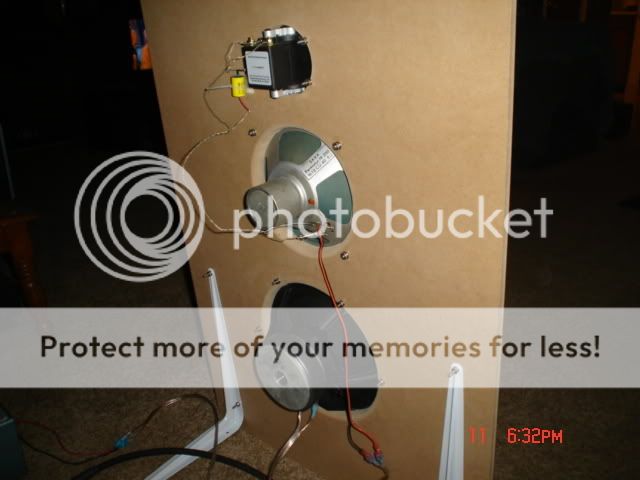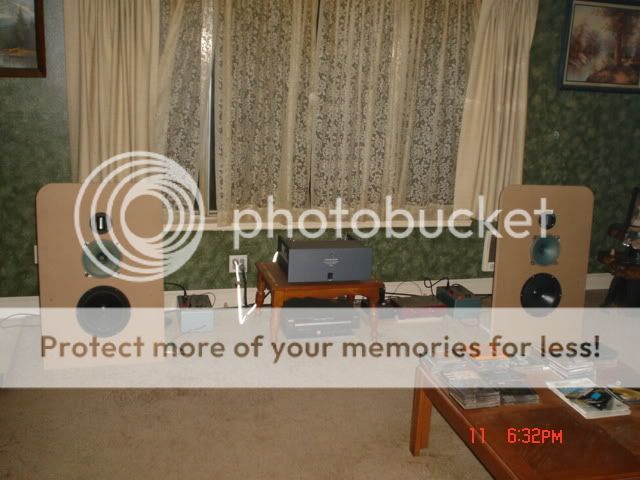Hi folks! Newbie here; confused of what full-range would go well in a simple OB design. Budget is an issue.
First of all, this is strictly for classical music-- everything from piano to symphony (but not a lot of organ). Secondly, because of need for lots of mid-range and lack of need for big bass/huge highs, I was really intent on buying one of the German vintage drivers like a Saba or Siemens (the Siemens are sooo expensive-- why!?). I'd read that an 8" FR in OB will provide most of the 'hearable' Fs. Thirdly, small room means small baffles-- so those high QTs greencones (anywhere from .9-1.2 for the 9"ers) looked good. Fourthly, the speakers will be driven with a T-amp, so high efficiency is necessary.
Question: For what I need, if I can get a pair of greencones for $80, why would I want to get B200s for $151CDN each? What would I be missing with the older cones?
I feel that I'm letting myself be lured into the newness of the B200s!
Thanks!
First of all, this is strictly for classical music-- everything from piano to symphony (but not a lot of organ). Secondly, because of need for lots of mid-range and lack of need for big bass/huge highs, I was really intent on buying one of the German vintage drivers like a Saba or Siemens (the Siemens are sooo expensive-- why!?). I'd read that an 8" FR in OB will provide most of the 'hearable' Fs. Thirdly, small room means small baffles-- so those high QTs greencones (anywhere from .9-1.2 for the 9"ers) looked good. Fourthly, the speakers will be driven with a T-amp, so high efficiency is necessary.
Question: For what I need, if I can get a pair of greencones for $80, why would I want to get B200s for $151CDN each? What would I be missing with the older cones?
I feel that I'm letting myself be lured into the newness of the B200s!
Thanks!
Is there a relationship between Qts and baffle size that I'm not grokking?drec said:Thirdly, small room means small baffles-- so those high QTs greencones (anywhere from .9-1.2 for the 9"ers) looked good.
Tom Zurowski has some interesting comments on full-rangers in smallish open baffles:
http://www.audio-resolution.com/zhorn/ob.html
Another person will be better able to explain this, but from what I understand, drivers with high QTs don't need as large an OB to derive the same lower Fs as similar spec'd drivers with lower QTs do. This comes from Thorsten Loesch:
"The second thing is that Olsons formulas for baffle width are inaccurate. For a simple "ballpark" idea, a plan Baffle with an assymetrically placed driver and a total circumference (all edges of the baffle measured) of 140cm (eg 27cm wide and 44cm high) will provide a +3db peak centered around 400Hz and will have
a -3db point of around 100Hz for the BAFFLE ONLY. The frequency scales with size.
SO if we had a driver with an Fs of 100Hz and a Qt around 1.0 (say a classic German Saba "Greencone" 8" Radio Full range Speaker) on the above baffle the result would be a speaker with a response flat to around 100Hz and then rapidly rolling with a slope a little steeper than 3rd order."
Others, in reference to German vintage drivers, have said that they require a smaller baffle than, say, Joe Esmilla's 36" x 31.5" baffle in which he mounted a variety of drivers. Other than that, I can't comment! My question still stands: what am I getting from the B200 that I couldn't get from an old German vintage driver like a Saba greencone?
Thanks!
"The second thing is that Olsons formulas for baffle width are inaccurate. For a simple "ballpark" idea, a plan Baffle with an assymetrically placed driver and a total circumference (all edges of the baffle measured) of 140cm (eg 27cm wide and 44cm high) will provide a +3db peak centered around 400Hz and will have
a -3db point of around 100Hz for the BAFFLE ONLY. The frequency scales with size.
SO if we had a driver with an Fs of 100Hz and a Qt around 1.0 (say a classic German Saba "Greencone" 8" Radio Full range Speaker) on the above baffle the result would be a speaker with a response flat to around 100Hz and then rapidly rolling with a slope a little steeper than 3rd order."
Others, in reference to German vintage drivers, have said that they require a smaller baffle than, say, Joe Esmilla's 36" x 31.5" baffle in which he mounted a variety of drivers. Other than that, I can't comment! My question still stands: what am I getting from the B200 that I couldn't get from an old German vintage driver like a Saba greencone?
Thanks!
- Status
- Not open for further replies.

